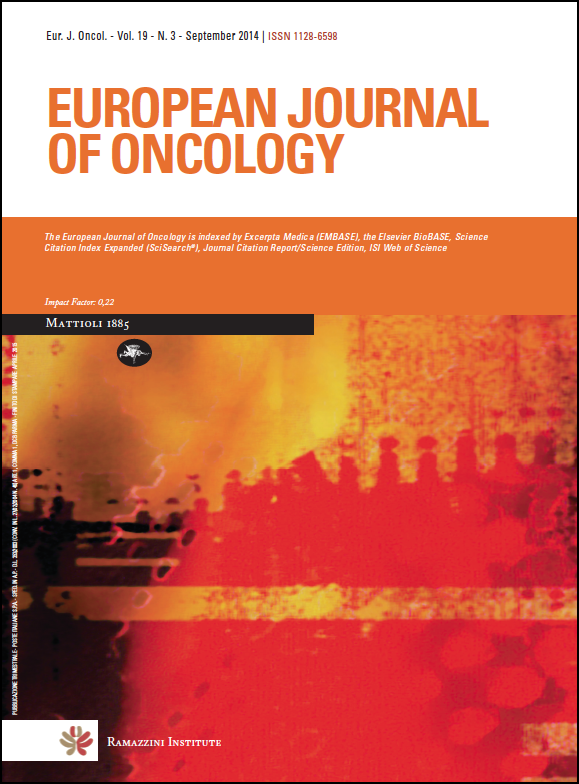Guidelines for the management of pleural effusions during dasatinib treatment in chronic myeloid leukemia
Keywords:
dasatinib, chronic myeloid leukemia, pleural effusions, management, risk factorsAbstract
Dasatinib is indicated for chronic myeloid leukemia (CML) patients with resistance or intolerance to imatinib or as a first line therapy in chronic or blastic phase of the disease; it has 325-fold increase potency compared to imatinib and is active in mutated and unmutated resistant patients. Pleural effusions are therapy-related events that can occur in all subset of patients treated with this drug. Aim of this paper is to draw up clinical guidelines on the management of pleural effusions associated with dasatinib treatment. Recommendations are based upon the published data and clinical personal experience from a number of different centres. Incidence of pleural effusions in different dasatinib trials, the related pathogenetic mechanisms and the associated risk factors are discussed. Practical recommendations to manage pleural effusions were finally composed. Adequate monitoring of patients with predisposing factors is necessary in order to early identify subjects at risk of developing such complications as well as to correctly manage them.
Downloads
Published
Issue
Section
License
OPEN ACCESS
All the articles of the European Journal of Oncology and Environmental Health are published with open access under the CC-BY Creative Commons attribution license (the current version is CC-BY, version 4.0 http://creativecommons.org/licenses/by/4.0/). This means that the author(s) retain copyright, but the content is free to download, distribute and adapt for commercial or non-commercial purposes, given appropriate attribution to the original article.
The articles in the previous edition of the Journal (European Journal of Oncology) are made available online with open access under the CC-BY Creative Commons attribution license (the current version is CC-BY, version 4.0 http://creativecommons.org/licenses/by/4.0/).
Upon submission, author(s) grant the Journal the license to publish their original unpublished work within one year, and the non exclusive right to display, store, copy and reuse the content. The CC-BY Creative Commons attribution license enables anyone to use the publication freely, given appropriate attribution to the author(s) and citing the Journal as the original publisher. The CC-BY Creative Commons attribution license does not apply to third-party materials that display a copyright notice to prohibit copying. Unless the third-party content is also subject to a CC-BY Creative Commons attribution license, or an equally permissive license, the author(s) must comply with any third-party copyright notices.

